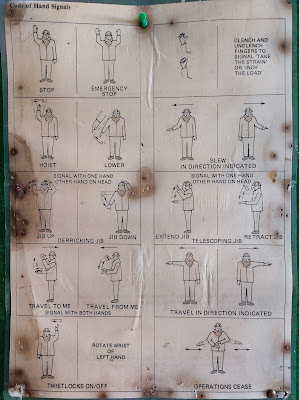*Keywords:* hand signals on ships, maritime communication, safety protocols, ship operations, crane signals
Effective communication is crucial in the maritime industry, where clear instructions can mean the difference between safety and disaster. One essential aspect of this communication is hand signals, which are used to convey critical information between crew members, operators, and other personnel on board ships. In this blog post, we'll delve into the world of hand signals on ships, exploring their importance, types, and best practices for implementation.
*Why Hand Signals Matter*
Hand signals are a vital component of maritime communication, particularly in situations where verbal instructions may be unclear or impossible to hear. They provide a visual means of conveying complex information quickly and efficiently, reducing the risk of miscommunication and accidents. Hand signals are used in various aspects of ship operations, including crane operations, cargo handling, and navigation.
*Types of Hand Signals*
The image provided illustrates a range of hand signals used on ships, including:
- Stop and emergency stop signals
- Hoist and lower signals
- Slew and direction signals
- Jib up and down signals
- Extend and retract jib signals
- Travel to me and travel from me signals
- Rotate wrist of left hand signals
- Operations cease signals
Each signal has a specific meaning and is used in a particular context to ensure safe and efficient operations.
*Best Practices for Implementation*
To ensure effective use of hand signals on ships, it's essential to follow best practices, including:
- Clearly defining and communicating hand signals to all personnel
- Ensuring that signals are visible and easily understood
- Using standardized signals to avoid confusion
- Providing regular training and practice sessions for crew members
- Reviewing and updating hand signal protocols regularly
By implementing these best practices and understanding the importance of hand signals on ships, maritime professionals can enhance safety, efficiency, and productivity on board vessels. Remember, clear communication is key to successful ship operations, and hand signals play a critical role in achieving this goal.
*Conclusion*
Hand signals on ships are a vital aspect of maritime communication, providing a visual means of conveying critical information quickly and efficiently. By understanding the different types of hand signals, their meanings, and best practices for implementation, maritime professionals can enhance safety, efficiency, and productivity on board vessels. Whether you're a seasoned sailor or just starting out, it's essential to familiarize yourself with hand signals on ships to ensure safe and successful operations.












0 comments:
Post a Comment